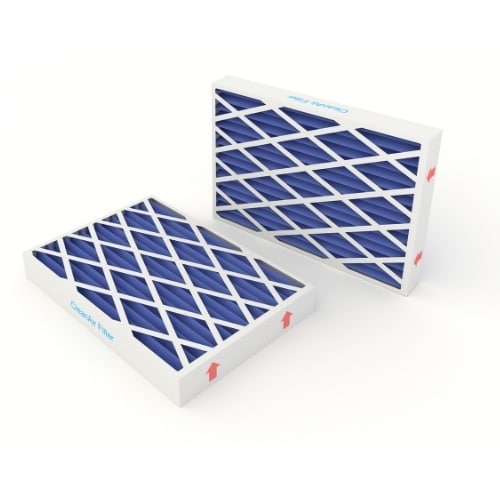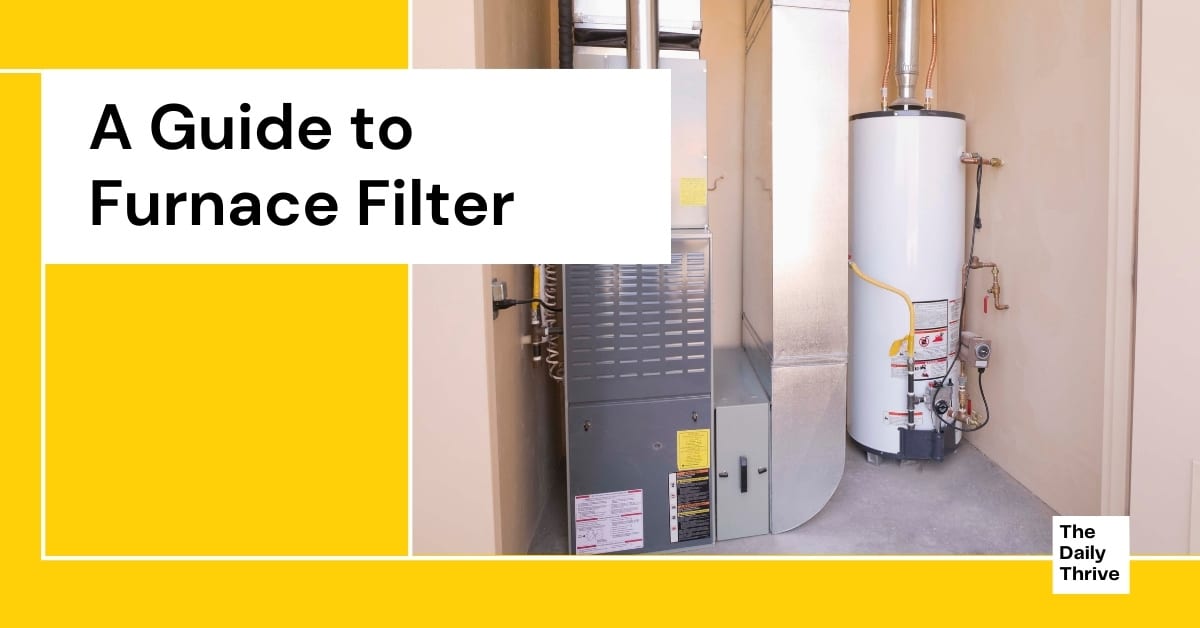One of the things that initially attracted me to a career in the HVAC industry was all the really cool technology and products that were currently on the market or under development. As with any technology, it seems like something new is being developed almost every day. It’s one aspect of what I do that keeps things fresh and exciting.
There’s a flip side to this, however. There are also some very ordinary and downright boring aspects to energy efficiency. Among the most ordinary and uninspiring components of a properly operating house is the lowly furnace filter.

Most people give little thought to them. Lots of people forget about them altogether.
In spite of their ordinary image, furnace filters can have a big effect on the quality of the air in your house, the wear and tear on your heating and cooling equipment, and ultimately, your energy bills.
How Often Should You Change Your Furnace Filter?
One of the things all of you have probably heard, and everyone seems to agree on, is you need to change your furnace filter on a regular basis.
There seems to be a big difference in opinion regarding exactly what that “regular basis” really is.
I’ve heard just about every explanation on when you should change your furnace filter.
- One inch thick filters get changed every month.
- Two-inch filters get changed every three to six months, but you should check them every month.
- Disposable fiberglass filters need to be changed every month.
- Disposable pleated filters might last two to three months. If you smoke, have pets, or dust (who doesn’t have dust?) in your house, maybe you should change your filter every month.
In short, it can get a bit complicated for something as uncomplicated as a furnace filter. Here’s my take on when to replace your furnace filter, and it’s really simple. If you live in your house, do it once per month.
Just having dust in your house will, in almost every case, require that you change your filter every month. Basic household dust is in every place inhabited by humans, and it alone will clog up any filter very quickly.
Just to gross you out a bit, household dust consists of some combination of shed bits of human skin, animal fur, decomposing insects, food debris, lint and fibers from clothes, bedding and other fabrics, tracked-in soil, soot, particulate matter from smoking and cooking, and, even lead, arsenic and DDT.
Here’s another thing to take into consideration. Even if you don’t have pets, you probably have pet hair or dander in your house.
One study found that while only 27% of the households in America owned cats, upwards of 80% of the homes in America have cat hair and dander in them. Having two cats, I can tell you for a fact; their hair is like Velcro. It sticks to everything, and it goes everywhere I go (and usually gets deposited there).
In other words, animal hair and dander, among other things, are getting into your home even if you don’t own any pets.
As a filter catches dust or other debris, it gets dirty. In an average home, this can happen rather quickly.
A dirty furnace filter will restrict the airflow through the return portion of your duct system. This, in turn, will reduce the amount of air your furnace needs to operate properly.
Without sufficient return air, your furnace will run longer and harder, causing unnecessary wear and tear on the equipment. It will also mean you are not getting the proper amount of heated or cooled air from the supply portion of your duct system.
In the end, if you don’t pay attention to it, that simple filter can wind up costing you quite a bit of money and aggravation in increased HVAC maintenance, higher utility bills, decreased comfort, and poor indoor air quality.
Furnace Filter Size
So, knowing that, the next thing you need to think about is getting the right size and kind of filter to suit your needs. The size of the furnace filter is usually defined in inches (i.e., 16″x25″x1″).
The sizing is pretty simple.
If a filter is already in your furnace, the measurements (length, width, and thickness) should be noted on its side. If there are no measurements on the filter, you can get them easily with a tape measure.
If there is no filter in the furnace, you can measure the length, width, and thickness of the slot where the filter is supposed to be.
Different Types Of Furnace Filters
As for the kind of filter, there are several different types on the market. The lowest-priced types may seem like a bargain, but they may not work effectively for your needs, which could wind up costing you much more in the long run.
Below is a listing of some of the most common types of disposable filters currently on the market.
Disposable Fiberglass Filter
This is your basic, low-cost furnace filter made from 1 inch thick spun fiberglass.
This type of filter does little more than protect your furnace from damage caused by larger particles, like dust, lint, and debris. They have very little effect in cleaning the air, so they are probably not a good option if you have allergies or asthma.
Disposable fiberglass filters have a MERV rating of 2 to 4 and usually cost around $1.00 each.
Disposable Pleated Filter
This is a more advanced filter made of 1-inch thick pleated polyester or a cotton/polyester blend.
Unlike disposable fiberglass filters, pleated filters can remove mold spores, dust mites, bacteria, smoke, and odors from the air. They can create more resistance to the airflow going to your furnace because of their heavier material, so it’s very important you change them every month. These are a good option for people with allergies or asthma.
Disposable pleated filters have MERV ratings of 6 and usually cost around $8.00 to $10.00 each. The extra cost is usually worth it.
Disposable Electrostatic Filter
This type of filter is very similar to the standard disposable pleated filter. They also remove mold spores, dust mites, bacteria, smoke, and odors from the air, but the big difference is the material they are made out of.
Electrostatic filters contain a self-charging electrostatic cotton or cotton/polyester material that attracts and traps particles instead of just catching what gets blown onto them, like other types of filters. They are an excellent option for people with allergies, asthma, pets, or who are smokers.
Disposable electrostatic filters have MERV ratings of 10 and cost $10.00 to $15.00 each. That can get pricy on a yearly basis, but they are well worth the cost. This is the type of filter I use in my house.
High-Efficiency Pleated Filter
These types of filters are usually 4 to 12 inches thick and are made of pleated synthetic cotton mounted in a metal frame.
Because of their size and high cost, they are typically only used in residential settings for people with respiratory problems or autoimmune disorders. This type of filter is used in hospitals.
They have MERV ratings of 14 to 16 and can cost around $100.00 each.
Permanent Electrostatic Filter
Unlike the disposable types of filters listed above, permanent electrostatic filters are, just as the name implies, permanent (at least up to a point).
They are similar to the disposable electrostatic types, but you do not need to replace them every month. Permanent filters have rigid metal frames and can be anywhere from an inch to several inches thick.
Their big difference is the electrostatic cotton filtering element can be washed and reused. This should be done every month.
Depending on the quality of the filter purchased, this type can be reused for upwards of six to eight years. The upfront cost of this type of filter is high, but considering you get to use them over and over again for an extended period of time, they eventually become very inexpensive.
Permanent filters have MERV ratings of 8 (some have a rating of only 6), and they cost anywhere from $80.00, on the low end, to $160.00, on the high end. If it lasts eight years, even the most expensive permanent filter will, in the long run, wind up costing less than $2.00 per month.
One thing to remember, after washing a permanent filter, they need to dry completely before inserting back into the furnace. While the filter is drying, it’s a good idea to have a disposable filter on hand to take its place, so your furnace and indoor air are protected.
What MERV Rating Should I Use?
All filters have a Minimum Efficiency Reporting Values (MERV) rating. This is now an international industry standard set up by the American Society of Heating, Refrigeration and Air-Conditioning Engineers (ASHRAE) that oversees the furnace filter industry.
This standard is used for determining a furnace filter’s ability to capture and hold dirt and dust in specific size ranges.
The chart below shows the standard MERV ratings and how well they filter particles. The average particle size indicates the smallest particles each type of filter will be able to block. As an example, human hair is 20 to 40 microns in size.
| MERV Rating | Average Particle Size Efficiency in Microns |
| 1 – 4 | 3.0 – 10.0: less then 20% |
| 6 | 3.0 – 10.0: 49.9% |
| 8 | 3.0 – 10.0: 84.9% |
| 10 | 1.0 – 3.0: 50% – 64.9% 3.0 – 10.0: 85% or greater |
| 12 | 1.0 – 3.0: 80% – 89.9% 3.0 – 10.0: 90% or greater |
| 14 | 0.3 – 1.0: 75% – 84.9% 1.0 – 3.0: 90% or greater |
| 16 | 0.3 – 1.0: 75% or greater |
Final Words
And that, my friends, is the simple story about the lowly and underappreciated furnace filter. They are one of the easiest and least expensive things you can have that will help make your home more energy-efficient.
DON’T FORGET TO CHANGE YOUR FILTER!






